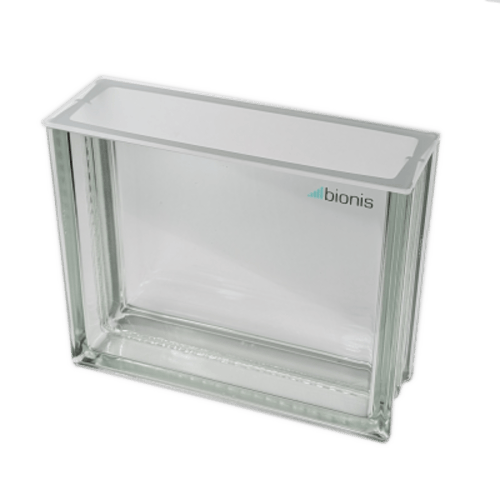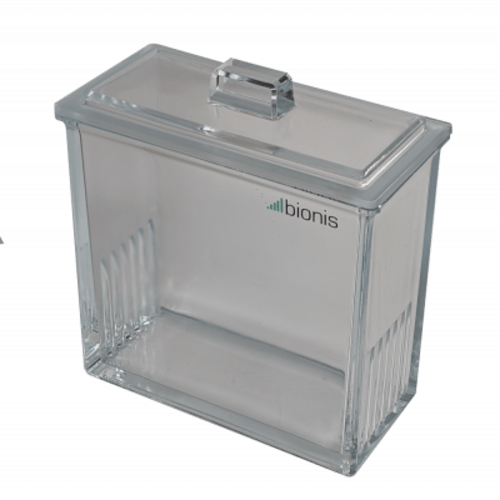The Standard Simultant Separating Chamber is a critical component of any thin-layer chromatography (TLC) setup, designed to ensure accurate and reproducible chromatographic separations. Crafted from high-quality, transparent borosilicate or chemical-resistant glass, this chamber provides a controlled environment for the development of TLC plates, promoting precise solvent migration and spot separation.
Available in multiple sizes—commonly designed to accommodate 20×20 cm TLC plates—these chambers are ideal for routine laboratory analysis, quality control, and research and development. The tight-fitting glass lid, whether flat or ground-glass, ensures a sealed environment that minimizes solvent evaporation and allows uniform vapor saturation throughout the chamber. This even saturation is crucial for consistent and sharp separation of sample components along the plate.
Some models include built-in grooves or plate holders that support vertical positioning of TLC plates, reducing the risk of uneven development or solvent creeping. The chamber’s crystal-clear walls make it easy to visually monitor the ascent of the mobile phase, enabling timely removal of plates when the solvent front reaches the desired height.
Designed for compatibility with a wide range of common TLC solvents such as hexane, ethyl acetate, methanol, or chloroform, the Simultant Separating Chamber is highly versatile. It can be used in pharmaceutical analysis, forensic laboratories, food safety testing, environmental monitoring, and academic teaching labs.
The chamber is fully reusable and easy to clean, offering long-term reliability and cost-effectiveness. Its robust construction ensures stability during development, and its inert glass surface prevents contamination or interaction with solvents and analytes.
The Standard & Simultant Separating Chamber is used for TLC plates up to a format of 200 x 200 mm. These models are strong, molded in a single block for longer life. There is a flat chamber floor with a small ridge in the middle so that less solvent is needed and the TLC plate can be placed comfortably. The separating chambers are available with a plain glass lid, with a knob lid or with a stainless steel lid version. The Simultant Separating Chamber is commonly used to wash TLC plates before use and then to store them in a protected manner. This procedure is used in particular for quantitative trace analysis.
Features of Standard Simultant Separating Chamber
-
High-Quality Construction
Made from borosilicate or chemically resistant transparent glass for durability and visibility. -
Tight-Sealing Lid
Ground-glass or flat lid ensures airtight sealing to minimize solvent evaporation and maintain chamber saturation. -
Uniform Solvent Saturation
Promotes even development of TLC plates for reliable, repeatable results. -
Multiple Sizes Available
Commonly supports standard 20×20 cm TLC plates; custom sizes is also be available. -
Plate Holder or Slot Options
Some models include grooves or slots to hold TLC plates vertically and securely. -
Clear Visibility
Transparent chamber walls allow real-time observation of the developing solvent front. -
Wide Solvent Compatibility
Suitable for use with various organic solvents such as hexane, methanol, ethyl acetate, and chloroform. -
Reusable and Easy to Clean
Designed for long-term laboratory use, reducing operational costs. -
Stable Base
Flat, stable bottom for secure positioning on benchtops during development.
Applications of Standard Simultant Separating Chamber
-
Pharmaceutical Industry
-
Drug purity testing
-
Quality control of active ingredients
-
Monitoring synthetic reactions
-
-
Food and Beverage Industry
-
Detection of food additives, preservatives, and contaminants
-
Analysis of colorants, flavors, and pesticides
-
-
Forensic Science
-
Analysis of drugs of abuse
-
Toxicology and trace chemical analysis in biological samples
-
-
Environmental Testing
-
Monitoring pollutants and organic compounds in soil and water
-
Detection of pesticides and industrial residues
-
-
Academic and Research Laboratories
-
Teaching tool for chromatography techniques
-
Development and optimization of separation methods
-
-
Chemical and Petrochemical Industries
-
Analyzing components in oils, fuels, and lubricants
-
Separation of complex organic mixtures
-




There are no reviews yet.